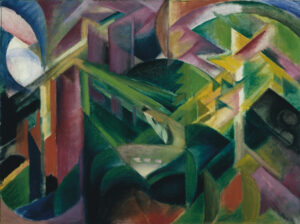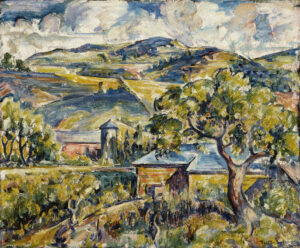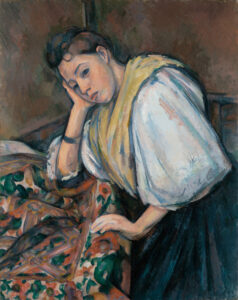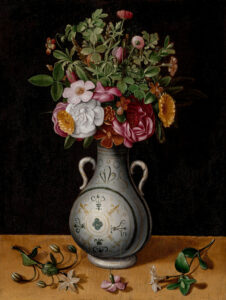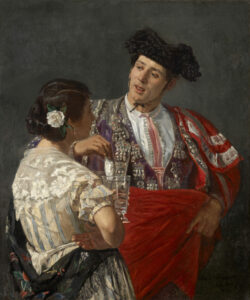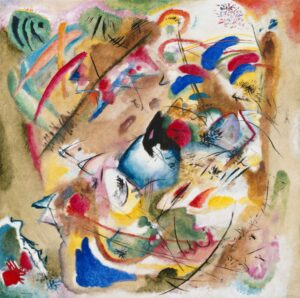
Odilon Redon captures here the very essence of Symbolist art, where reality and reverie merge in a chromatic symphony.
This exquisite pastel portrait of Madame Arthur Fontaine (1901) reveals a woman deeply absorbed in her embroidery, enveloped in a luminous yellow aura that appears to emanate from her dress and radiate throughout the composition. Surrounding her figure, ethereal bouquets in blue and white hues create an almost supernatural atmosphere, transforming a simple moment of contemplation into a transcendent experience.
The composition demonstrates Redon’s exceptional technical mastery, handling pastel with remarkable sensitivity and creating powerful contrasts between the melancholic figure in the foreground and the floral explosion that envelops her. Marie Escudier’s inclined face, delicately sketched, suggests a deep interiority, an intimate communion with the work she is creating.
Additional Information
- Madame Arthur Fontaine (Marie Escudier, 1865–1946) by Odilon Redon, 1901, The Metropolitan Museum of Art
- 28 1/2 x 22 1/2 in. (72.4 x 57.2 cm)
- The Metropolitan Museum of Art, Fifth Avenue, New York, Gallery 813
- https://www.metmuseum.org/art/collection/search/437377
Odilon Redon (1840-1916) stands as one of the most singular artists of his time, navigating between Symbolism and early abstraction. Initially renowned for his “noirs”—charcoal drawings and lithographs depicting nightmarish visions—Redon underwent a dramatic shift toward color around 1890. His later pastels and oils, exemplified by this portrait, reveal a dreamlike universe populated by strange flowers and mystical creatures.
Influenced by literature (Poe, Mallarmé) and music, Redon developed an artistic language where color becomes the pure expression of emotion and spirituality. This portrait of Marie Fontaine, created during a visit to Saint-Georges-de-Didonne, demonstrates his ability to transcend reality and reach a deeper, more poetic truth—the meeting of two artistic sensibilities.

